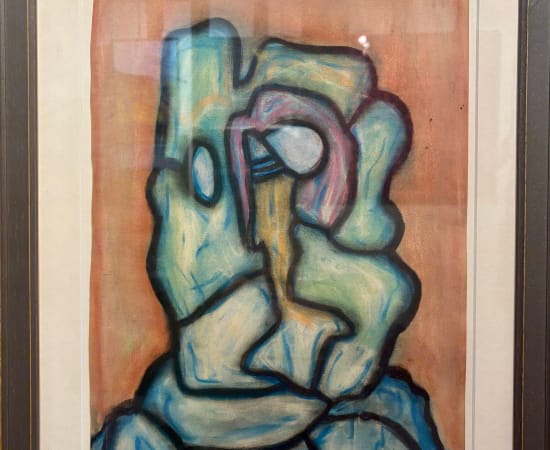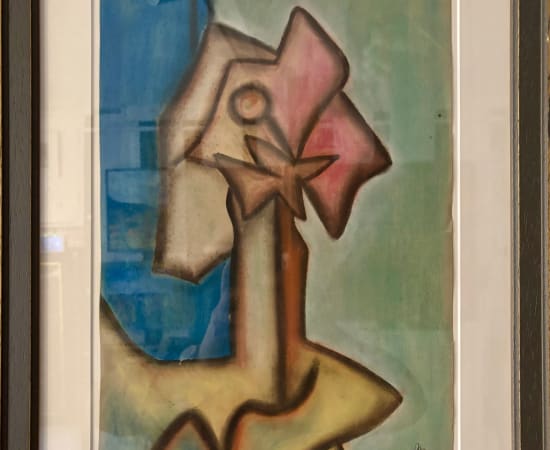Desmond Morris British, b. 1928
Desmond Morris is a British surrealist artist, zoologist, and author, best known for his work in both the scientific and artistic fields. As a painter, he developed a unique surrealist style, while his background in ethology (the study of animal behaviour) influenced his approach to both art and writing. He gained widespread fame with his 1967 book The Naked Ape, which explored human behaviour from a zoological perspective.
Early Life and Education
• Born: January 24, 1928, in Purton, Wiltshire, England.
• Developed an early interest in both art and science, particularly zoology.
• Studied zoology at the University of Birmingham, later earning a PhD from the University of Oxford, specializing in animal behaviour.
Artistic Career
Morris was drawn to surrealism in the 1940s and developed a distinctive style featuring dreamlike, organic forms. His early work was influenced by artists like Salvador Dalí and Joan Miró.
Key Moments in His Artistic Career:
• 1948: Held his first solo exhibition at the Swindon Arts Centre.
• 1950s–1960s: Continued to develop his surrealist approach while working as a researcher in zoology.
• 1967: Following the success of The Naked Ape, he became a well-known public figure but continued painting throughout his career.
• Later years: His work was exhibited internationally, including major shows in London, New York, and Japan.
Themes in His Art
Morris’s paintings often depict biomorphic forms—fluid, dreamlike shapes that suggest both organic and surreal elements. Some key characteristics of his work include:
• Fascination with the subconscious mind
• Anthropomorphic and zoomorphic imagery
• Symbolism and surrealist compositions
• Bright colours and intricate textures
Scientific Career and Writing
Morris balanced his artistic pursuits with a distinguished career as a zoologist and author.
• 1950s: Worked at the London Zoo, where he studied animal behaviour and later became the curator of mammals.
• 1967: Published The Naked Ape, which examined human behaviour through an evolutionary and zoological lens.
• Wrote numerous books on human and animal behaviour, including Manwatching (1977) and The Human Zoo (1969).
Legacy and Influence
Desmond Morris remains a rare example of an individual excelling in both the arts and sciences. His surrealist paintings continue to be exhibited worldwide, while his books have influenced generations of researchers and the general public alike.
His ability to merge scientific curiosity with artistic imagination makes him a unique and enduring figure in both disciplines.



